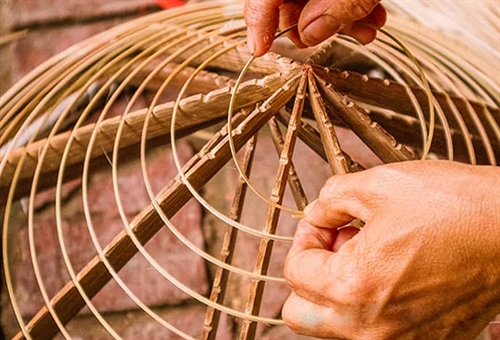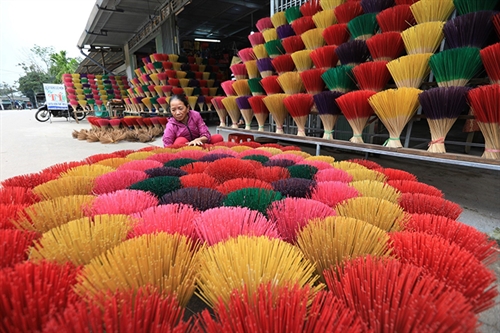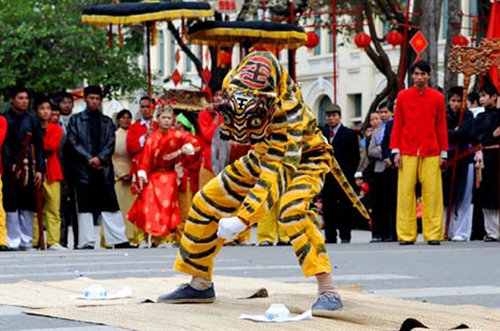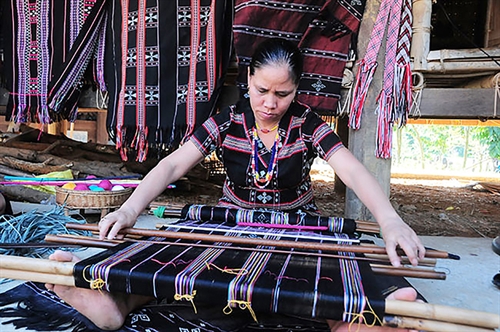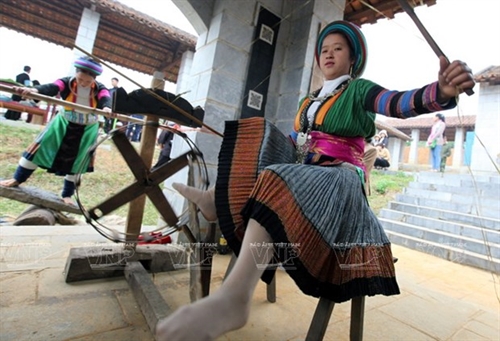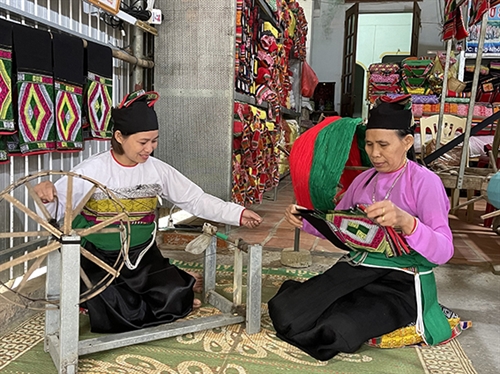Living in a country with a long coastline of 3,260 kilometers, a large sea area and dense networks of canals and rivers, Vietnamese people, from past to present, have always been familiar with building boats, not only freight and fishing vessels but also fighting ships as well. No one knows exactly when the Vietnamese built their first seafaring boats but the image of boats can be seen on ancient bronze drums. Nowadays, boat building remains a traditional craft in many localities across the country.
Historical documents revealed that the central province of Nghe An was one of the country’s earliest wooden boat building centers. The wooden boat building craft first appeared in Nghe An more than 700 years ago and became popular under the reign of King Le Thanh Tong (1442-1497). At that time, a largest-ever naval fleet was formed with its bases located along Cam river, a 47km-long tributary of the Thai Binh river system running through Nghi Loc district. Skillful boat builders in surrounding areas, mostly from Hoang Lao village (now Trung Kien village in Nghi Thiet commune, Nghi Loc district, Nghe An province), were invited to repair and build wooden boats for the fleet. One of them, Nguyen Quy Cong, a talented boat builder who possessed the skills of boating on shallow waters, was considered the ancestor of the Hoang Lao handcrafted wooden boat building village.
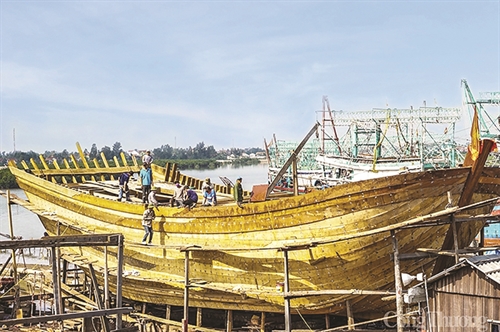 |
| A wooden boat in the making__Photo: https://congthuong.vn/ |
Knowing about the province’s abundant supply of high-quality timber and local boat builders’ reputation for good workmanship, in 18067, the first King of the Nguyen dynasty, Gia Long, ordered boat builders from Trung Kien village to build 100 boats for the court.
Dr. Tran Duc Anh wrote in the book “Vietnam’s shipbuilding industry in the Nguyen dynasty” published in 2014 by the Ho Chi Minh Culture and Arts Publishing House: In 1822, King Minh Mang ordered from France a copper-hulled ship of a length of six truong[1], five thuoc, five tac, a width of one truong, eight thuoc, and a depth of one truong, two thuoc, five tac. Then the King asked boat building yards in Nghe An province to build wooden boats after the model of the French boat. Local boat builders successfully accomplished the task and were awarded a big amount of money.
In 1843, after building two sea patrol boats for the court, the province’s boat builders was awarded by King Thieu Tri for the excellent quality of their products. The wooden boat building craft developed strongly under the reign of King Thieu Tri with the number of boat building yards reaching 25.
To make wooden boats, boat builders may use a variety of wood. Merawan, legume, oak, Fujian cypress, mahogany, rosewood and ebony were the most common ones. Depending on their hardiness, softness and dryness, each type of timber was used in different parts of a boat. For example, to build a 50-ton wooden boat, Trung Kien villagers used 20 logs of lauan or meranti timber; 20 logs of white crape myrtle timber, and 10 logs of beech, ford and other types of timber and two tons of iron nails.
 |
| Building a wooden boat frame__Photo: VNA |
Trung Kien traditional boat builders possess several know-hows that make the boats they built strong and durable. First, they use a log of wood which is between 13 and 14 meters long to make the backbone of the boat, called the keel. When unable to find a log of that size, they have to join two shorter logs together. In this case, the joints should be created neither where the poop deck is placed nor at the bow or the stern post of the boat. Then, they make frames and floor timbers run at regular intervals along the keel and shape the hull by using symmetrical frames. Next, a naturally curved timber, except cross-gained timber, is used to form compound curves of the hull in order to prevent the boat from tilting sideways in the water. Boat builders then smooth the wood surface and fill holes, caulk joints and cracks with resin and bolts and screws with molten asphalt to make the boat water-resistant and maintain the boat’s primary structural integrity.
To put the finishing touch on the boat, craftsmen use some kinds of leaves, usually mulch and pine, to fumigate the hull - the part from the waterline to the keel of the boat. The fumigation would be repeated on a monthly schedule to increase the boat’s durability. Nowadays, they apply an antifouling paint layer to the underwater hull of the boat once a year.
Wooden boats built by Trung Kien villagers have been recognized by the State as folk models used for fishing activities. They include a 30-ton ship model which is 17-meter long and 2-meter high and has a 4.6-meter high stern post, and a 5-ton motor fishing vessel model which has a flat stern and a 0.9-meter draft and is 12 meters long and 4 meters wide. In October 2014, Trung Kien traditional wooden boat building village was recognized as Vietnam’s typical old village.
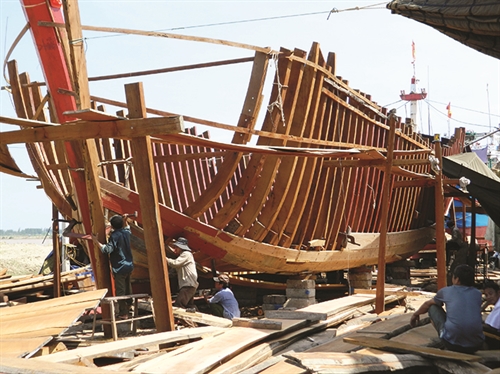 |
| A wooden boat frame built by the traditional method of Trung Kien boat builders__Photo: https://thoidai.com.vn/ |
Along with Trung Kien village, Quang Yen town in the northern province of Quang Ninh is well-known for upstream wooden sailing boats with bat-winged sails.
Historical documents revealed that wooden sail boats, made by traditional boat building villages in Quang Yen town, were used in the Bach Dang Historic Battle against the Yuan-Mongol invaders in 1288.
For skillful boat makers in the town, boards, the hull and whittling technique are decisive factors in making the best traditional wooden boats. They only use chisels to create smooth diagonal, straight and curved lines of the boards. In addition, they apply a special boat building technique to make the boats become waterproof by sealing them with thin pieces of coconut fiber or coir. Thanks to this unique water-resistant method, villagers can build ships with a tonnage of 60 tons.-
